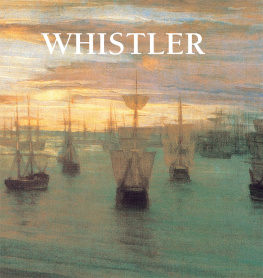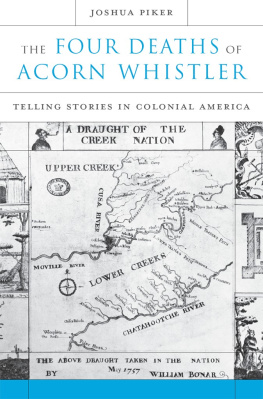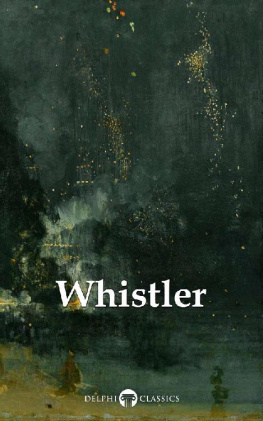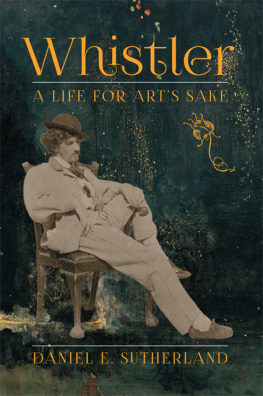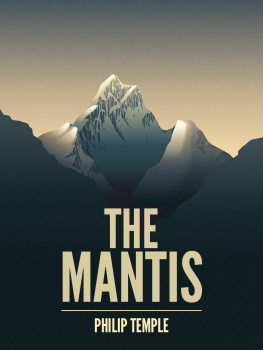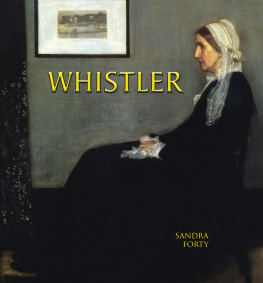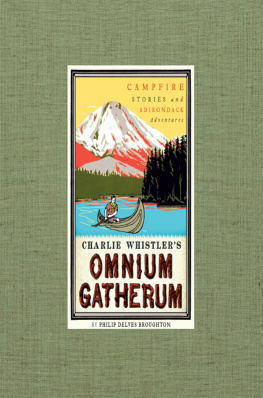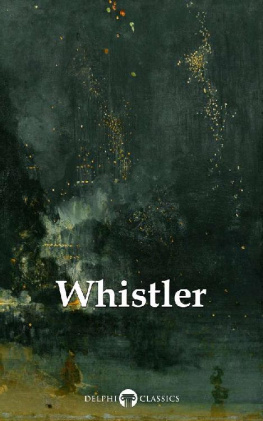
Cover: Julien Depaulis
ISBN 978-1-78160-606-3
Confidential Concepts, worldwide, USA
Parkstone Press International, New York, USA
All rights reserved. No part of this may be reproduced or adapted without the permission of the copyright holder, throughout the world.
Unless otherwise specified, copyright on the works reproduced lies with the respective photographers. Despite intensive research, it has not always been possible to establish copyright ownership. Where this is the case, we would appreciate notification.
James McNeill
Whistler

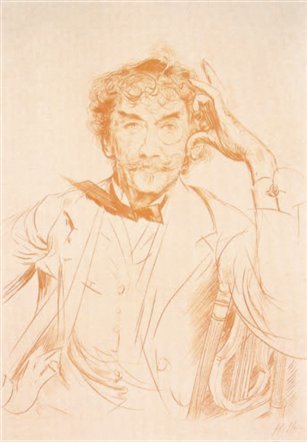
James A. McNeill W histler ,
after a drypoint by Paul-Csar Helleu.
Whistler suddenly shot to fame like a meteor at a crucial moment in the history of art, a field in which he was a pioneer. Like the Impressionists, with whom he sided, he wanted to impose his own ideas. Whistler's work can be divided into four periods. The first was a research period in which the artist was influenced by the realism of Gustave Courbet and by Japanese art.
Whistler then discovered his own originality in the Nocturnes and the Cremorne Gardens series, thereby coming into conflict with the academics who wanted a work of art to tell a story. When he painted the portrait of his mother, Whistler entitled it A rrangement in Gray and Black and this is symbolic of his aesthetic theories. When painting the Cremorne Pleasure Gardens it was not to depict identifiable figures, as did Renoir in his work on similar themes, but to capture an atmosphere. He loved the mists that hovered over the banks of the Thames, the pale lights, the factory chimneys which at night turned into magical minarets. Night redrew landscapes, effacing the details. This was the period in which he became a precursor and adventurer in art; his work, which verged on abstraction, shocked his contemporaries.
The third period is dominated by the full-length portraits which brought him his fame. He was able to imbue this traditional genre with his profound originality. He tried to capture part of the souls of his models and placed the characters in their natural habitat. This gave his models a strange presence so that they seem about to walk out of the picture to come amongst us. By extracting the poetic substance from individuals he created portraits described as mediums by his contemporaries, and which were the inspiration for Oscar Wilde's The Picture of Dorian Gray.
Toward the end of his life, the artist began painting landscapes and portraits in the classical tradition, strongly influenced by Velasquez. Whistler proved to be extremely rigorous in constantly ensuring that his paintings coincided with his theories. He never hesitated in crossing swords with the most famous art theoreticians of his day.
His personality, his outbursts, and his elegance were a perfect focus for curiosity and admiration. A close friend of St phane Mallarm , admired by Marcel Proust who rendered homage to him in A La Recherche du Temps Perdu , a provocative dandy, a prickly socialite, a demanding artist, he was a daring innovator.
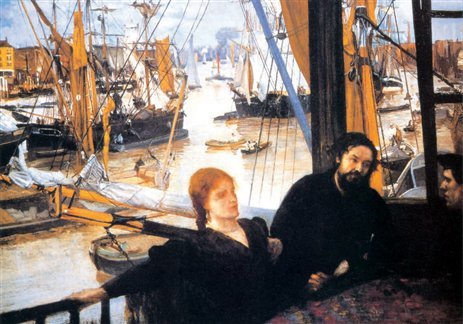
Wapping . 1860-1864.
28 x 39 in. (71.1 x 101.6 cm). Signed and
dated Whistler 1861. National Gallery of Art,
John Hay Whitney Collection, Washington.
Born Under a Wandering Star (1834-1863)
James Abbott Whistler was born on July 10, 1834, in Lowell, a little town in Massachusetts. James's father was a graduate of West Point Military Academy. He took Anna Mathilda McNeill as his second wife. Whistler was a railroad engineer in Lowell, and this is where James and his two brothers were born. In 1842, Nicholas I, Tsar of Russia, chose John Whistler to build him a railroad from St. Petersburg to Moscow and Major Whistler left for Russia. A year after her husband's departure, Mrs. Whistler and her children took the same route for St. Petersburg. During the trip, the youngest son fell gravely ill and died. James was nine years old at the time. Despite his strict upbringing, the child encountered many of the influences which were to shape his future career as an artist. The Scottish artist, Sir William Allen, was a frequent visitor of the Whistlers and James greatly enjoyed the conversations which he heard in the drawing-room. Once the children were in bed, the painter took Mrs. Whistler apart and confided to her, "Your son has an exceptional talent." From these first attempts there remains a portrait of his aunt, Alicia McNeill. James spent his time drawing and leafing through the large volume of engravings by Hogarth, whom he would always consider to be England's greatest artist.
A cholera epidemic had broken out in St. Petersburg. Mrs. Whistler had to leave hurriedly for England with her children. On November 9, 1849, Major Whistler died without ever seeing his family again and the repercussions of his demise on the family finances forced them to go back to Connecticut. James was now a teenager and despite his mother's strictness, his personality began to show through and his opinions started to take shape. The Whistlers and the McNeills both had a tradition of military men in the family. James's mother enrolled him at the greatest military academy in the United States, West Point, which he entered in 1851.
Even in his first year, his examination results were revealing: he was first in drawing, but thirty-ninth out of forty-three in philosophy and at the bottom in chemistry. He took little notice of the academy's discipline and the disapproval of his lateness and his careless dress. Guided, like his fellows, by a sense of honor, James could not prevent himself from revolting internally against its traditions, despite his respect for certain ideas of chivalry. The young man was not cut out for a military career, being incapable of submitting himself to the strict discipline. He was informed of his dismissal in June 1854.

. At the Piano. 1858-1859.
26 x 36 in. (67 x 91 cm).
Taft Museum, Cincinnati, Ohio.
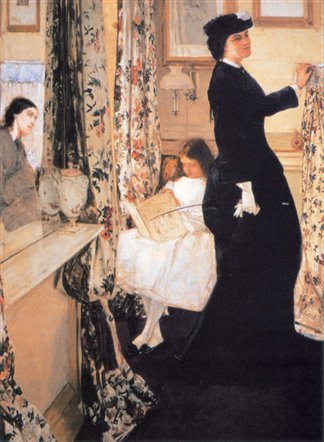
. Harmony in Green and Rose:
The Music Room . 1860-1861.
37 5/8 x 27 7/8 in. (95.5 x 70.8 cm).
Freer Gallery of Art, Smithsonian
Institution, Washington.
After leaving the academy, Whistler was apprenticed at a locomotive factory in Baltimore and spent his days wandering around the workshops and offices. Soon, the boredom became intolerable and Whistler left Baltimore. Here again, he found he disliked office routine and did his work without enthusiasm. Whistler led a very active social life. He was often to be seen at receptions, dressed in the latest fashion. The young James Whistler was passionate about drawing and painting and despised anything not directly related to it. Whistler was regarded as something of a practical joker. James became very bored in the Geodetic Coastal Survey and resigned in February 1855. Yet, as in the case of West Point, the few months he had spent at the office were of great importance for his career. In fact, he had learned how to make etchings, a technique in which he would come to excel.

